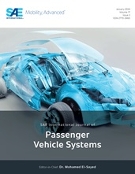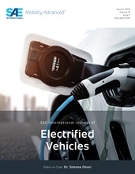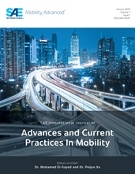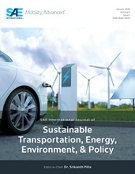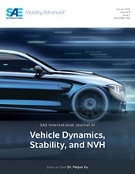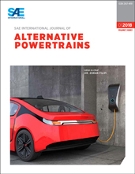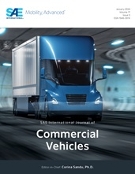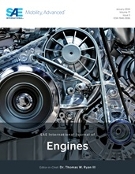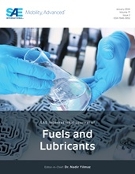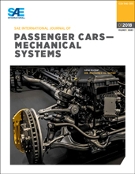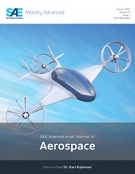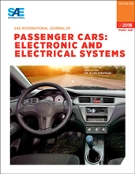Your Destination for Mobility Engineering Resources
Announcements for SAE Mobilus
Browse AllRecent SAE Edge™ Research Reports
Browse All 156Recent Books
Browse All 971Recently Published
Browse AllThis specification defines the requirements for a grooved clamp coupling and flanges suitable for joining intermediate pressure and temperature ducting in aircraft air systems. The rigid coupling joint assembly, hereafter referred to as "the joint", shall operate within the temperature range of -65 °F to +800 °F
This specification covers a titanium alloy in the form of sheet, strip, and plate up through 4 inches (101.6 mm) (see 8.5
This specification covers polyvinyl chloride insulated single conductor electric wires made with tin-coated copper conductors or silver-coated copper alloy conductors. The polyvinyl chloride insulation of these wires may be used alone or in combination with other insulating or protective materials
This specification covers aluminum and aluminum alloy foil in the form of laminated sheet (see 8.6
This test code describes tests for determining characteristics of hydraulic positive displacement motors as used on off-road self-propelled work machines as referenced in SAE J1116
This specification covers a premium aircraft-quality corrosion-resistant steel in the form of bars, forgings, and forging stock
This test method provides a standardized procedure for evaluating the electrochemical resistance of automotive coolant hose and materials. Electrochemical degradation has been determined to be a major cause of EPDM coolant system hose failures. The test method consists of a procedure which induces voltage to a test specimen while it is exposed to a water/coolant solution. Method #1, referred to as a “Brabolyzer” test, is a whole hose test. Method #2, referred to as a “U” tube test, uses cured plate samples or plates prepared from tube material removed from hose (Method No. 2 is intended as a screening test only). Any test parameters other than those specified in this SAE Recommended Practice, are to be agreed to by the tester and the requester
This specification covers a silicone (MQ/VMQ/PVMQ) elastomer that can be used to manufacture product in the form of sheet, strip, tubing, extrusions, and molded shapes. This specification should not be designated for use in molded O-rings and molded O-ring cord, molded rings, compression seals, molded-in-place gaskets, and plate seals for aeronautical and aerospace applications
This specification covers an aluminum alloy in the form of plate 0.250 to 5.500 inch (6.35 to 139.70 mm), inclusive, in nominal thickness (see 8.5
This SAE Aerospace Information Report (AIR) has been written for individuals associated with ground level testing of turbofan and turbojet engines and particularly for those who might be interested in investigating the performance characteristics of a new test cell design or of proposed modifications to an existing test cell by means of a scale model test
This specification covers a titanium alloy in the form of round bar and wire 0.625 inch (15.88 mm) and under in nominal diameter or thickness (see 8.7
This specification covers a titanium alloy in the form of bars up through 4.000 inches (101.60 mm) in nominal diameter or least distance between parallel sides, inclusive, and maximum cross-sectional area of 32 square inches (206.5 cm2), forgings of thickness up through 4.000 inches (101.60 mm), inclusive, and maximum cross-sectional area of 32 square inches (206.5 cm2), and stock for forging of any size (see 8.6
This specification covers a titanium alloy in the form of sheet and strip up to 0.143 inch (3.63 mm), inclusive, in nominal thickness (see 8.6
This SAE Standard for reliability-centered maintenance (RCM) is intended for use by any organization that has or makes use of physical assets or systems that it wishes to manage responsibly
